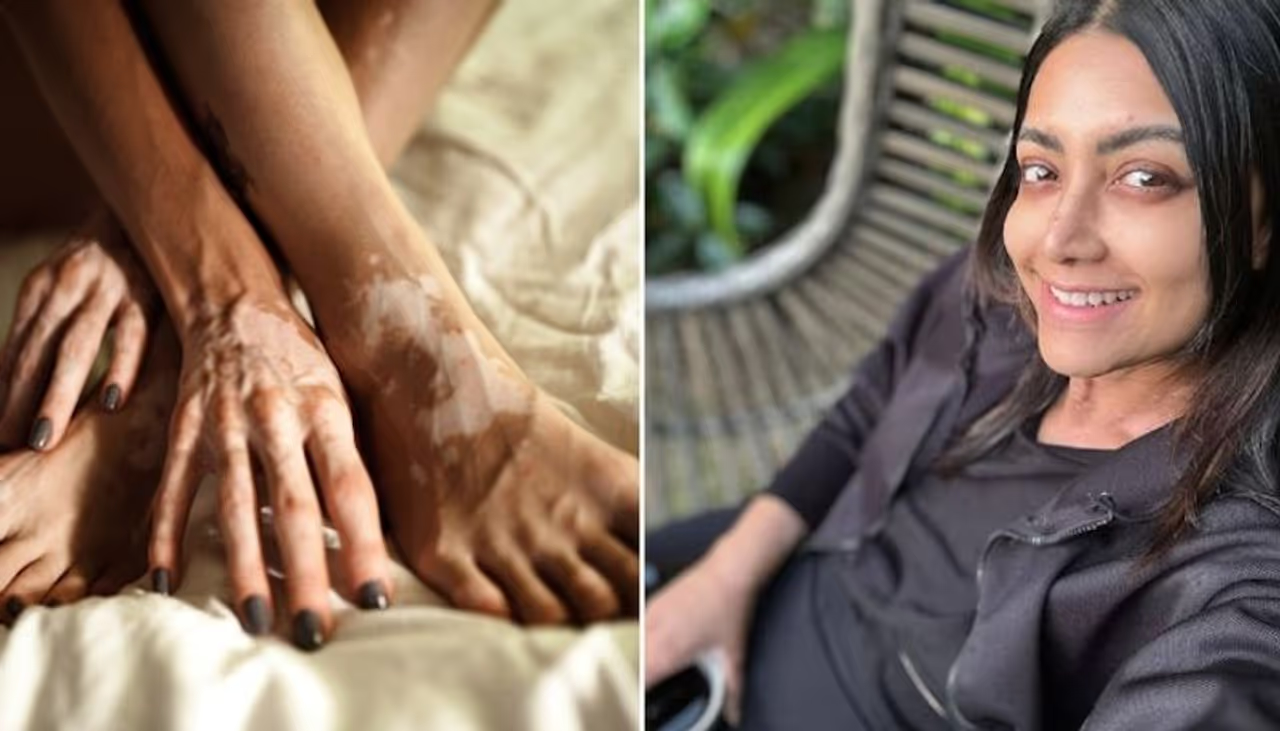- Home
- Lifestyle
- What Is Vitiligo? Mamta Mohandas experiences skin color loss; know the symptoms, causes and more
What Is Vitiligo? Mamta Mohandas experiences skin color loss; know the symptoms, causes and more
Mamta Mohandas revealed on Instagram that she had the autoimmune disorder vitiligo. Mamta has also stated that she is 'losing colour'. She also posted several selfies. Know what is Vitiligo, its Symptoms, Causes, Treatment, and more

Photo Courtesy: Instagram
Mamta Mohandas, an actress, has revealed that she has the autoimmune disorder vitiligo. Mamta also admitted to 'losing colour' on Instagram on Sunday (Jan 15). She also posted a number of selfies. Mamta held a cup as she drank black tea while sitting on a chair in the garden. She opted for a black ensemble – black T-shirt, tights and a jacket. She captioned the post, "Dear (sun emoji), I embrace you now like I have never before. So Spotted, I’m losing color…I rise even before you every morning, to see you glimmer your first ray through the haze."

Photo Courtesy: Instagram
Mamta MohandasMamta geo-tagged the location as Niraamaya Retreats Samroha in Kerala. Mamta added, "Give me all you’ve got..for I will be indebted, here on out and forever by your grace." She also added the hashtags--color, autoimmune disease, autoimmune, vitiligo, Sunday, spotlight, imperfection, no makeup, no filter, embrace the journey, healing and heal yourself.
Getty Photos
What Is Vitiligo?
According to the American Academy of Dermatology, vitiligo is a disorder that causes the skin to lose its colour (AAD). This skin condition can affect persons of any race. The difference between normal skin tone and the white areas caused by vitiligo is more evident in persons with darker skin, according to the National Institute of Arthritis and Musculoskeletal and Skin Diseases (NIAMS).
Getty Photos
Vitiligo causes skin colour loss in a variety of places of the body. It is frequently symmetrical, affecting both sides, such as both hands or both knees. Some people get discolouration in their lips, on their scalp, or in their hair, lashes, or brows.
Getty Photos
Symptoms of Vitiligo
The major sign of vitiligo is the loss of natural colour or pigment, which is depigmentation. Depigmented patches can form anywhere on your body and have the following effects:
- Skin that becomes milky-white in spots, most often on the hands, feet, arms, and face. The patches, on the other hand, might emerge wherever.
- Hair, which can turn white in locations where the skin's pigmentation is fading. This can occur on the scalp, brow, eyelashes, beard, or body hair.
- Mucous membranes include the interior of your mouth and nose.
Getty Photos
Vitiligo patients may also develop:
- Low self-esteem or a negative self-image caused by worries about one's looks can hurt one's quality of life.
- Uveitis is a broad word for inflammation or swelling of the eye.
- Inflammation of the eardrum.
Vitiligo is typically a lifetime ailment once it starts. According to the Cleveland Clinic, there is a 10 to 20% possibility that your skin's original colour will be returned, especially if you are young, your vitiligo developed in less than six months, and the white spots are predominantly on your face.
Getty Photos
Causes of Vitiligo
Scientists think vitiligo is an autoimmune illness in which the body's immune system assaults and kills melanocytes. A sunburn, mental discomfort, or chemical exposure can all start or worsen vitiligo. Furthermore, researchers continue to investigate how family history and genes may have a role in the development of vitiligo.
Getty Photos
Treatment of Vitiligo:
According to Michele Green, MD, a dermatologist in private practice in New York City, there is no treatment for vitiligo. However, more treatment alternatives are available to help reduce the appearance of white skin patches.
Nondrug and nonsurgical treatments include makeup and self-tanners, which can conceal white patches, and hair dye, which can restore colour to greying or white hair. Dr. Haughton recommends light treatment, preferably narrowband UVB.
Explore the latest Lifestyle News covering fashion, wellness, travel, Food and Recipes, and more. Stay updated with trending Health News, fitness tips, and expert insights to inspire your daily living. Discover personalized lifestyle trends that keep you stylish and informed. Download the Asianet News Official App for everything that adds value to your everyday life.